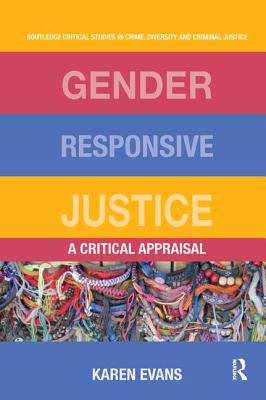
- Afhalen na 1 uur in een winkel met voorraad
- Gratis thuislevering in België
- Ruim aanbod met 7 miljoen producten
- Afhalen na 1 uur in een winkel met voorraad
- Gratis thuislevering in België
- Ruim aanbod met 7 miljoen producten
Omschrijving
At the end of the twentieth century a step-change in thinking about the offending behaviour of women began to impact on policy-makers concerned with the treatment of female offenders. A growing number of nations, states and organisations both national and supra-national in nature began to acknowledge that existing criminal justice and especially penal practices had not been sufficiently attentive to women's needs and had discriminated against women as a result.
The concept of 'gender-responsive justice' - an orientation to working with women and girls based around a consideration of the special needs of women as prisoners and their particular pathways to offending - has been developed as a result. This book explores the development of this concept, the theories which have informed it, policy arenas in which gender-responsive justice has been attempted and the practices of gender-responsive justice which have subsequently emerged. This book takes a global perspective as it outlines the different international and national arenas within which gender-responsive justice gained favour and considers what has been learned from this novel and feminist-inspired approach.
Gender-responsive justice has not been without its critics, however, and this book also examines the different arguments which have been used to attack or critique the concept from varied perspectives. This book lays down a clear theoretical framework for understanding gender-responsive justice and will be useful in assessing current and future policy-making in this area.
Specificaties
Betrokkenen
- Auteur(s):
- Uitgeverij:
Inhoud
- Aantal bladzijden:
- 146
- Taal:
- Engels
- Reeks:
Eigenschappen
- Productcode (EAN):
- 9780367227210
- Verschijningsdatum:
- 4/02/2019
- Uitvoering:
- Paperback
- Formaat:
- Trade paperback (VS)
- Afmetingen:
- 155 mm x 234 mm
- Gewicht:
- 272 g

Alleen bij Standaard Boekhandel
Beoordelingen
We publiceren alleen reviews die voldoen aan de voorwaarden voor reviews. Bekijk onze voorwaarden voor reviews.












